Publications
Ulster-Scots Academy Press & Ullans Press
REFERENCE
The Hamely Tongue: A personal record of Ulster-Scots in County Antrim
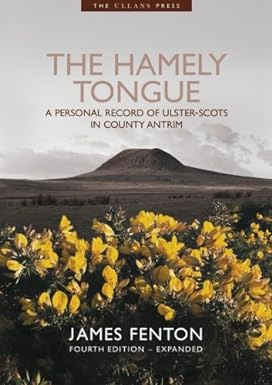
James Fenton
This is a personal record of Ulster-Scots as spoken in the greater part of rural Antrim during the period since 1930. The book contains over 3000 word entries and this fourth edition includes a supplementary essay by the author on "Ulster-Scots in the Twenty-first Century".
Order The Hamely Tongue »
The Leevin Tongue: An historical record of Ulster-Scots as a living language in County Down
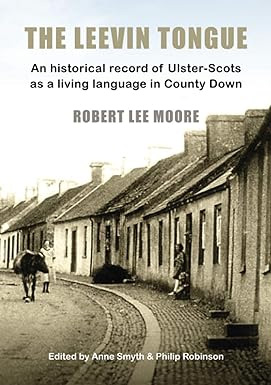
Robert Lee Moore (Author), Anne Smyth (Editor), Philip Robinson (Editor)
"The Leevin Tongue" is not only a unique 3000-word glossary of Ulster-Scots vocabulary in County Down, but it also contains an extensive collection of related language material written and collected in the early 1900s by Robert Lee Moore, a Bangor medical practitioner who died in 1946 and here made publicly accessible for the first time. These materials have been transcribed and edited from his writings and other manuscript collections by Anne Smyth and Philip Robinson, and the glossary enriched by further entries and examples gleaned by the editors from their transcripts of 40 short stories written in Ulster-Scots by Dr Moore between 1904 and 1911. When the totality of Robert Lee Moore’s collections and writings are taken together with his glossary, they represent a highly significant historical record of Ulster-Scots in County Down. "The Leevin Tongue" provides an authentication of, and an historical insight into, a dynamic living language that remained relatively unknown to the outside world until the publication of James Fenton’s "The Hamely Tongue" record of Ulster-Scots in County Antrim in 1995. Dr Moore’s work clearly demonstrates that Ulster-Scots is not simply a fossilised dialect of the Scots Language in Ulster, or a ‘revived’ language recently fostered in an artificial cultural cocoon, but a living language in its own right that has been evolving in contact with other linguistic traditions for over 400 years.
Order The Leevin Tongue »
The Ulster-Scots Writers’ Guide
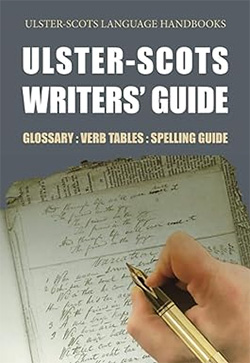
Philip Robinson
The Ulster-Scots Writers’ Guide is intended to provide both learners and native speakers with easy reference access to everyday Ulster-Scots words and their spellings. The English to Ulster-Scots glossary is unique as all other Ulster-Scots dictionaries are Ulster-Scots to English. The spelling guide explains those Ulster-Scots spelling rules that have evolved from traditional conventions into consistent and agreed standards for the modern language. These standards are also recommended for use in the classroom, in Ulster-Scots writing competitions, for the quality assurance of official Ulster-Scots translations, and most importantly for Ulster-Scots creative writing contributions for publication. Any aspiring writer only wanting to use this handbook as a quick ‘spell-check’ for individual words will find that the glossary at the beginning of this book provides a simple reference ‘index’ to spelling as well as vocabulary.
Order Ulster-Scots Writers' Guide »
Ulster-Scots: A grammar of the traditional written and spoken language
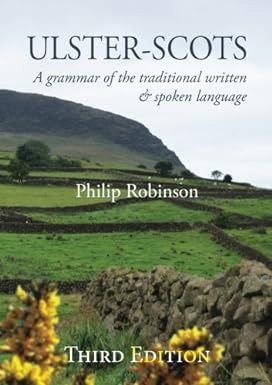
Philip Robinson
When Philip Robinson's pioneering Ulster-Scots Grammar was first published in 1997, it was partly intended to complement James Fenton's dictionary, The Hamely Tongue, in the task of introducing the outside world to the historical authenticity of Ulster-Scots as a living, indigenous 'European Regional Language' in its own right. James Fenton then accurately described the book as combining "... meticulous research and analysis with a wealth of illustrative material, particularly of the wide range of subtle, and always significant, syntactical variations. Dr. Robinson's book is surely fit to become the standard reference on the subject."
In this third, expanded edition, detailed chapters on different aspects of grammar and syntax have been thoroughly revised and the chapter on 'Spelling and Pronunciation' updated to include modern agreed spellings. The first chapter, 'The Historical Geography of Ulster-Scots: Language, Literature and Culture', now draws on Philip Robinson's other major academic work (The Plantation of Ulster, 1600-1670), with no fewer than nine maps charting the original lands and estates granted to Scottish settlers in Ulster (including the 'Hamilton and Montgomery' lands in county Down), the historical spread of actual Scottish settlement on the ground, and the precise 'heartland' areas that were identified as Ulster-Scots speaking communities in the 1960s.
The final chapter provides a unique 'reader' of contemporary Ulster-Scots prose, and the book ends with a 1500-word English / Ulster-Scots Glossary; both being indispensable classroom aids to any Ulster-Scots teaching programme.
Order Ulster-Scots: A grammar of the traditional written and spoken language »
From Ulster to America: The Scotch-Irish Heritage of American English
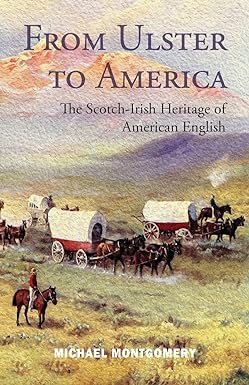
Michael Montgomery
Over the last 350 years, Ireland has sent a stream of countless emigrants to North America. Estimates range from six to ten million. Each emigrant spoke English, Irish, or Ulster Scots, and many indeed used two or all three of these tongues. One of the most formative chapters in this fascinating story is the often-overlooked arrival of at least 150,000 from Ulster in the colonial era, specifically in the sixty years before the American Revolution. This book recounts the lasting impact they made on the development of the English language of the United States from the eighteenth century to the present day. It documents nearly four hundred terms and meanings, each with quotations from both sides of the Atlantic, that were contributed to American English by these eighteenth-century settlers from Ulster. It draws on letters they sent back to their homeland, other archival documents associated with their settlement, and local fiction and poetry; it shows that Ulster emigrants and their children, who settled mainly in the American interior, gave as much to regional American English as any other group from the Old World. Its pages contain many pleasant surprises: readers will find terms both instantly recognisable and ones that are unfamiliar. The numerous quotations not only bring alive the speech of earlier days on both sides of the Atlantic, but also extend our understanding of the culture, mannerisms and life of those pioneering times, while through their words, poignantly link the past with the present.
Order From Ulster to America »
Tha Fower Gospels: Matthew, Mark, Luke and John in Ulster-Scots
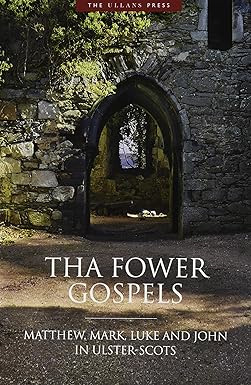
Ulster-Scots Language Society
“This Ulster-Scots translation is an old story told in a very fresh way.” – Professor Michael Montgomery.
THA FOWER GOSPELS of Matthew, Mark, Luke and John present the Good News about Jesus Christ with their own unique perspective. Their common theme is the birth, life, work, death and resurrection of Jesus. Together, they give us a comprehensive picture of who Christ was and is. Gospel may be an old word, but the Good News it contains is as relevant and welcome today as it ever was.
ULSTER-SCOTS is the native tongue of many rural communities in Northern Ireland, but one that has been primarily spoken rather than written. From the time of the earliest vernacular versions, the translation of the Bible, or parts of it, into any language has been a major landmark in the history and evolution of that language. Martin Luther’s translation had a profound impact on the development of Standard German. In a similar way, this translation of the Gospels will help to establish a new standard or benchmark for both spoken and written Ulster-Scots.
This book is the first translation of the Four Gospels into Ulster-Scots. It is the fruit of the labour of several groups of Ulster-Scots volunteers from counties Antrim and Down, working since 2006 under the direction of professional Bible translators, Philip and Heather Saunders.
Order Tha Fower Gospels »
Ulster-Scots Psalter: The Metrical Psalms in Ulster-Scots
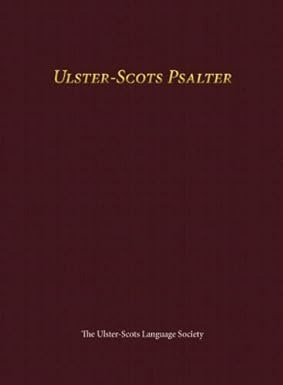
Ulster-Scots Language Society
In this complete music edition of an Ulster-Scots Psalter, all 150 Psalms in metre (for singing) have been translated by Philip Robinson from the English of the 1650 Scottish Metrical Psalter into Ulster-Scots. Each Psalm is set to at least one 'traditional' tune, and a Psalm tunes index has been added. In his introduction, Philip Robinson also provides an historical account of the religious, cultural and literary importance of the Psalm-singing tradition to Ulster-Scots communities over the past 400 years.
Order Ulster-Scots Psalter »
Revelation and the Letters of John in Ulster-Scots
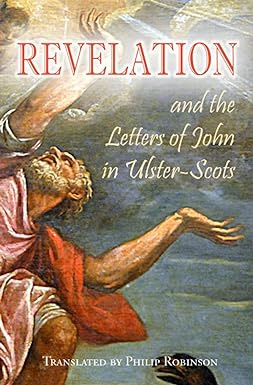
Philip Robinson
Revelation and the Letters of John in Ulster-Scots. These four books from the end of the New Testament: The Revelation of St. John the Divine; The First Epistle General of John; The Second Epistle of John; and The Third Epistle of John – all of which, in addition to his Gospel, were written by the Apostle John in his old age – are here translated into Ulster-Scots by Philip Robinson, who has added extensive footnotes (also in Ulster-Scots) as textual cross-references to other books of the Bible.
Philip Robinson is the author of Ulster-Scots: a grammar of the traditional written and spoken language, and completed his versified translation of the Psalms in 2014: Ulster-Scots Psalter: The Metrical Psalms in Ulster-Scots (Ullans Press).
Order Revelation and the Letters of John in Ulster-Scots »
Ulster-Scots Names for People: Surnames, First Names, Nicknames and Descriptive Names
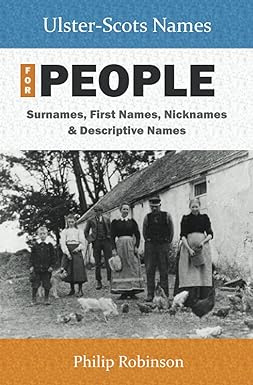
Philip Robinson
ULSTER-SCOTS NAMES FOR PEOPLE is a definitive collection of over 2000 ‘people’ names (surnames, first names, generic names for individuals and groups and descriptive names), as they are rendered in the Ulster-Scots language. These lists are arranged alphabetically under the English equivalent word for easy reference. They have been compiled from the comprehensive database of the Ulster-Scots Academy’s “English to Ulster-Scots Historical Dictionary”, from which numerous citations and historical examples are provided to illustrate the sources, usages and senses of the Ulster-Scots words. This book is the first “Ulster-Scots Name Book” in a ground-breaking new series which will draw on the same historical dictionary treasure chest of authenticated vocabulary, but for other subjects: Birds, Plants and Wildlife, Fish and Fishing, Place Names, etc. As well as being a nostalgic ‘browse’, these books will be an essential tool for Ulster-Scots writers, translators, teachers, students and a delightful checklist for native speakers and Ulster-Scots language practitioners in general.
Order Ulster-Scots Names for People »
Ulster-Scots Names for Birds
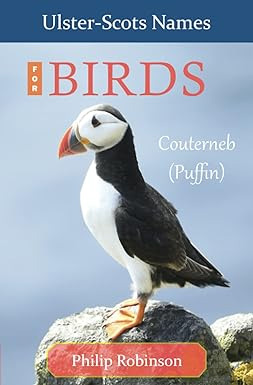
Philip Robinson
ULSTER-SCOTS NAMES FOR BIRDS is a definitive collection of about 400 wild bird names as they are rendered in the Ulster-Scots language, arranged in an alphabetical list under the equivalent English name for easy reference. These word lists have been compiled from the comprehensive database of the Ulster-Scots Academy’s English to Ulster-Scots Historical Dictionary, from which about 1,500 citations and historical examples of individual Ulster-Scots bird names are provided to illustrate the sources, usages and senses of the Ulster-Scots words. Additional word-lists are also provided of Ulster-Scots words used for the appearance, behaviour and general characteristics of birds. This book is the second English to Ulster-Scots ‘Name Book’ (the first was for ‘People’) in a new series which will draw on the same treasure chest of authenticated vocabulary for other subjects: Plants and Wildlife, Fish and Fishing, Place Names, etc. As well as being a fantastically rich and nostalgic ‘browse’, these books will be an essential tool for Ulster-Scots writers, translators, teachers, students and a delightful checklist for native speakers and Ulster-Scots language practitioners in general.
Order Ulster-Scots Names for Birds »
ULLANS MAGAZINE
Ullans: Nummer 14, Simmer 2015: Volume 14
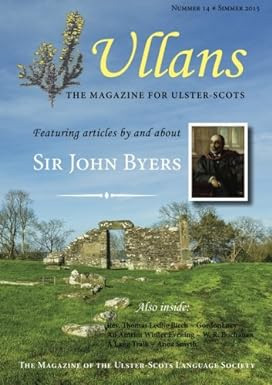
Ulster-Scots Language Society, Anne Smyth (Editor)
Featured in this fourteenth issue of Ullans is the work of Sir John Byers (1853-1920), only child of the Rev. John Byers, missionary to China, and of Margaret Byers who founded Victoria College in Belfast. Sir John was an eminent medical professional in his day, specializing in the field of obstetrics and gynæcology, but he also had an ardent passion for the language and folklore of Ulster. He diligently collected local words and phrases that he heard as he went about his business as Professor of Midwifery at the Royal Victoria Hospital and in 1904 published some of the material in Sayings, Proverbs and Humour of Ulster.
John William Byers died suddenly of a cerebral hæmorrhage at the comparatively early age of 67. In his latter years he had been busily engaged in preparing a more comprehensive account on the subject of Ulster language. His handwritten notebooks are deposited as part of the Byers Collection at the Ulster Folk and Transport Museum.
Also included in this issue is a selection of contemporary Ulster-Scots poetry and reviews of the 4th edition of James Fenton's Hamely Tongue and the Ulster-Scots Psalter: The Metrical Psalms in Ulster-Scots.
Order Ullans: Nummer 14 »
Ullans: Nummer 15, Ware 2018: Volume 15
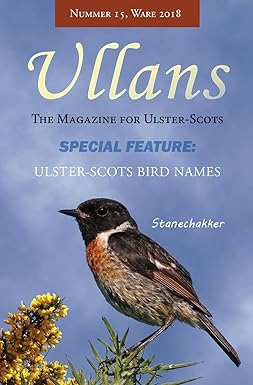
Ulster-Scots Language Society, Anne Smyth (Editor)
The 15th issue of Ullans: The Magazine for Ulster-Scots has as its special feature an extended article by John Erskine on Ulster-Scots bird names, which includes an introduction, sources, notes and works consulted, as well as an extensive list of names in English, Latin and Ulster-Scots. Also included on the bird theme is "The Ornithologist" by Thomas Stott, a poem in Ulster-Scots that first appeared in the Belfast Commercial Chronicle in 1805.
A further feature of this issue is the complete short novel The Wet Wooing: A Narrative of Ninety-Eight by Sir Samuel Ferguson. Among the other articles are "Who Fears to Write of Ninety-Eight?", "Nesca Robb of Lisnabreeny", "Carnmoney Witches", and "John Getty of Randalstown and Ballymena".
The magazine, produced by the Ulster-Scots Language Society (now in its 26th year), contains the usual complement of contemporary Ulster-Scots writing in prose and verse from both past contributors and some very welcome new ones.
Order Ullans: Nummer 15 »
Ullans: Nummer 16, Hairst 2023: Volume 16
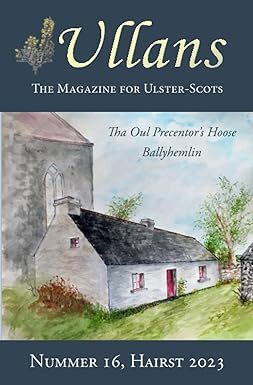
Ulster-Scots Language Society, Anne Smyth (Editor)
The 16th issue of Ullans: The Magazine for Ulster-Scots is the first to be produced with a full colour interior. It includes articles on the restoration of ‘The Old Precentor’s House at Ballyhemlin Non-Subscribing Presbyterian Church’ and ‘The 1883 Shipwreck of the Wild Deer on the North Rock, Cloughey’, as well as a variety of poems and prose in Ulster-Scots.
These include reminders of the historical writers, such as John Stevenson, together with equally authentic Ulster-Scots from current writers, like Philip Robinson and the talented new voice, Steve Dornan. Ulster-Scots has something to say in all writing contexts, formal and informal, and there will be something here to pique the interest and suit the tastes of all Ulster-Scots enthusiasts.
Order Ullans: Nummer 16 »
FICTION
The Back Streets o the Claw
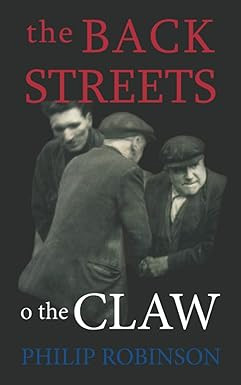
Philip Robinson
The Claw, tough as old boots, was hanging on to its identity with stubborn pride. It had to do so, for of all of the inner-city districts in Bigganreek, it was the prime target for redevelopment. But this hard-nosed Ulster-Scots community had a soft centre.Jack M‘Clean was not struggling to escape from the Claw. But he lost his first job, and then his first girlfriend, and still he tried to find real meaning to life among his “ain folk”. If he was lucky, he might just find another steady love too.Eventually, he found both after an unsettling move to the Newbiggins housing estate, but in a very, very unexpected way.This partly surreal, partly satirical novel has been written by Philip Robinson as a companion to his Wake the Tribe o Dan. By way of contrast, this humorous fantasy portrays a different Ulster-Scots culture. It is aggressively urban, anti-authoritarian and male-centred. Jack M‘Clean’s personal story reflects the tragic demise of his own working-class community. And his hopes and dreams were simply those of the better life promised to thousands of others reared in The Back Streets o the Claw.
Order The Back Streets o the Claw »
Wake the Tribe o' Dan

Philip Robinson
Betsy Sloan, the young heroine of "Wake the Tribe o' Dan", had important choices to make about her life, her loyalties, and most painfully of all, about her partner, Steven. But these decisions were taken out of her hands in a tussle between the traditional values of Drumcrun, and those of the outside world. With the arrival of the 'Men frae the Ministry' who were intent on recording and re-inventing Drumcrun's distinctive way of life, there came more unwelcome change. Their support was nearly the kiss of death for the very thing they were trying to save – and almost the ruination of Betsy. The future of the unique community in Drumcrun (the Hill of the Cruithin) was inextricably linked to Betsy's own destiny. Was the last remnant of their curious tribalism to be resurrected in a new awakening – or was its inevitable demise to be quietly mourned in a final 'wake'? "Wake the Tribe o' Dan" is the first novel in Philip Robinson's "Chronicles of Drumcrun" trilogy, all of which have been written in the Ulster-Scots kailyard style, but with a playful, postmodern twist.
Order Wake the Tribe o' Dan »
The Man frae the Ministry
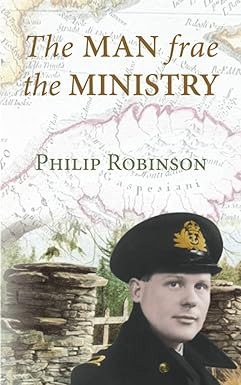
Philip Robinson
Two local lads, Sam M'Roberts and Joel Crowe, seemed to be getting on well until they found their lives turned upside down. Behind these shake-ups were two very different figures – the ghostly spirits of Luke Seever and Alexander Peden from the mists of their home-town’s past. "The Man frae the Ministry" completes the Ulster-Scots trilogy by Philip Robinson. The first two in the series are "Wake the Tribe o Dan" and "Back Streets o the Claw". Each novel stands apart as a separate story, but with clear connections that are revealed.
Order The Man frae the Ministry »
The Old Orange Tree
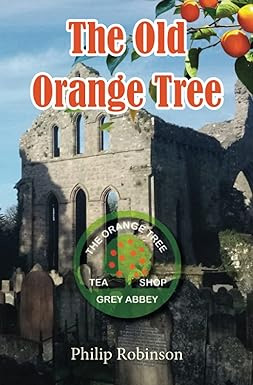
Philip Robinson
David Magill’s life as a bookseller at the heart of ‘John Steinbeck Country’ in Orange Grove, California, was mostly sunshine, only occasionally clouded by the fleeting shadows of domestic frustration. But the balance of his peace of mind flipped when he inherited a house and tea-shop back in “Kirkreeba”, county Down. His American wife, Kay, also found the move life-changing – in more ways than one. THE OLD ORANGE TREE is Philip Robinson’s fourth Ulster-Scots novel and is a playful, Gothic fantasy, partly responding to Steinbeck’s own Scotch-Irish family saga in “East of Eden”. But it also explores serious relationship tensions – within marriage, within the ‘Orange’ tradition, and with the Ulster-Scots diaspora at the other side of the world. Indeed, some of the most laid-back characters in this novel eventually do snap, such is the dramatic build-up of tension, temptation and testing.
Order The Old Orange Tree »
Tales from Bonnybefore and Scotch Quarter
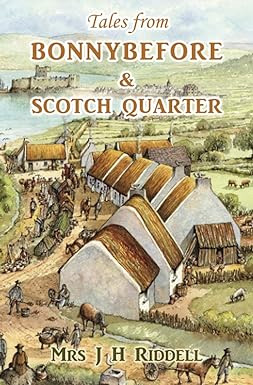
Mrs J H Riddell (Author), Philip Robinson (Editor)
Some of the short stories relating to the Carrickfergus area in this collection by Mrs J.H. Riddell (1832-1906) were first published by her in "The Prince of Wales’s Garden Party and Other Stories" (1882), while the ‘Kingslough’ stories appeared as sections of her 3-volume novel "The Earl’s Promise" (1873). Mrs Riddell, née Charlotte Eliza Lawson Cowan, was born at The Barn, Scotch Quarter, Carrickfergus in 1832, the youngest daughter of James Cowan, mill-owner of Carrickfergus and Whiteabbey and High Sheriff for the county of Antrim.
Order Tales from Bonnybefore »
The Humour of Druid’s Island: Ulster-Scots Tales from Islandmagee
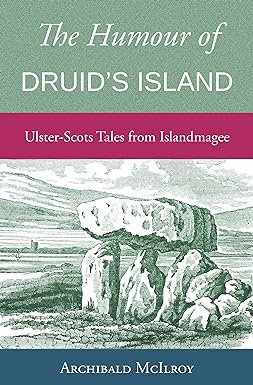
Archibald McIlroy
Archibald McIlroy (1859-1915) was already recognised as the most accomplished Ulster-Scots ‘kailyard’ writer of his generation when he published The Humour of Druid’s Island in 1902. His popular tales When Lint was in the Bell (1897) and The Auld Meetin’-Hoose Green (1898) had been based on his childhood memories around Ballyclare and recorded with great humour the language, religion and everyday way of life in the peaceful corner of east Antrim where he was born and bred.
The Humour of Druid’s Island (1902) introduces us, in the same vein, to a different setting – Islandmagee – familiar to him from family connections and holidays there. Islandmagee was dubbed ‘Druid’s Island’ by McIlroy because of the megalithic dolman called the Druid’s Altar in Ballylumford, at the northern end of the peninsula. From here a small passenger ferry took ‘islanders’ to and from Larne and here the ‘Druid’s Altar’ would meet tourists close to their landing point. The world of entertaining ‘country crack’ that McIlroy brings to life in ‘Druid’s Island’ is yet another literary triumph, authentically defining the stereotypical character of an Ulster-Scots community just before the outbreak of World War I.
Order The Humour of Druid’s Island »
The Mystery of Strangford Lough: A Tale of Killinchy and the Ards
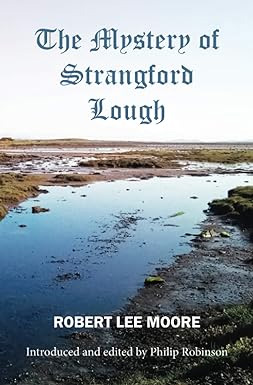
Robert Lee Moore (Author), Philip Robinson (Editor)
"The Mystery of Strangford Lough: A Tale of Killinchy and the Ards" is an Ulster-Scots Gothic romance of murder, mystery, kidnap, smuggling and betrayal, coded documents, ghosts in the night, haunted rooms and castles. It was originally written by Robert Lee Moore in 1909, but is here published in book form for the very first time. The setting is the Scots-settled land around ‘Lough Cowan’ (Strangford Lough), and the period is the second generation of that settlement – the 1630s – the same decade that the "Eagle Wing" with its cargo of Presbyterian exiles, including Rev. John Livingstone of Killinchy, sailed for America, and when Sir Hugh Montgomery, 1st Viscount Montgomery of the Great Ardes, died at Newtownards. The heroine is Kate Savage, daughter of Philip Savage of Sketrick Castle and niece of Patrick Savage of Portaferry Castle, who is betrothed to Hugh de Montgomery of Rosemount Castle at Greyabbey. But these gentrified characters appear relatively rarely, and it is ordinary local folk that most populate the book and ‘speak’ in their native Ulster-Scots, a glossary for which is appended at the end.
Order The Mystery of Strangford Lough »
Orange Lily
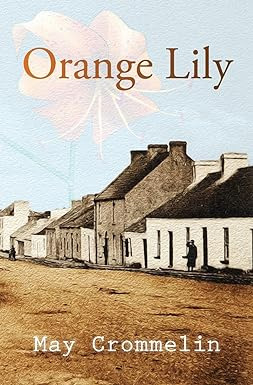
May Crommelin (Author), Philip Robinson (Editor)
The novel Orange Lily, originally published in 1879, is set in the area surrounding the small village of Carrowdore in County Down, Northern Ireland. Its eponymous heroine, Lily Keag, is a farmer's daughter whose love for her childhood sweetheart, Tom Coulter, is thwarted by a class divide that few would have dared cross in nineteenth-century Ulster. She was dubbed 'Orange Lily' partly because of her reddish hair, but also because of her father's position as Master of the 'Ballyboly' Orange Lodge. But beyond the story of the trials and tribulations of the star-crossed lovers is a wealth of social and linguistic history of the region, including the hierarchy from the 'big house' down, customs, beliefs, traditions, and Ulster-Scots vocabulary.
May Crommelin (1849-1930) was born at Carrowdore Castle and spent a good part of her formative years there. She travelled widely and wrote numerous novels and travel books, as well as short stories and articles for magazines. Her sympathy with the Orange dimension of local folk-culture is perhaps surprising, coming, as it does, from a 'gentry' perspective, and from an author who circulated among Victorian London's literati (her sister was married to the poet laureate, John Masefield). But the Crommelin ancestors had been French Huguenots who first fought with King William III in 1690, and then settled in Ulster under his royal patronage, as May Crommelin was always proud to remind the world.
This new edition, edited, introduced and glossed by Dr Philip Robinson, also includes the short stories The Witch of Windy Hill and An Old Maid's Marriage.
Order Orange Lily »
Black Abbey
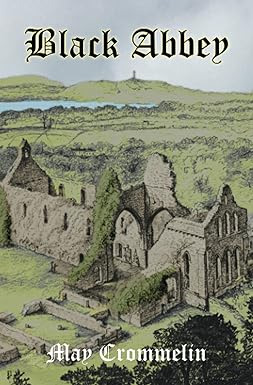
May Crommelin (Author), Philip Robinson (Editor)
Black Abbey by May Crommelin, originally published in 1882, is set in the small village of Greyabbey in the Ards Peninsula of County Down. It opens with the kindly old minister of “Black Abbey” Presbyterian Meeting House (Rev. Joseph Cosby), bringing home to the manse his motherless grand-daughter “Bella”. The novel unfolds from a story of Bella’s childhood interaction with the “De Burgo” children in the landlord’s house – into one of adult relationships fraught with social, cultural and even intellectual tensions between the ‘Established Church’ family and the Presbyterian one. However, the manse household is soon enlarged by the arrival of a nephew (Luke Cosby) of the old minister, who in due course becomes the new ‘young minister’ with some feather-ruffling ‘liberal’ views. In terms of social status, the superior attitude of the De Burgos towards their overwhelmingly Presbyterian underlings in the surrounding countryside often manifests in their attitude towards the Cosbys.
May Crommelin’s unique contribution in this novel is to provide a detailed and authentic record of some of the complexities of diverse Ulster Presbyterian mindsets in the 19th century. Yet the story is, above all that, a classic Victorian romance. Nevertheless, May Crommelin’s ‘Victorian’ style belies her pithy observations on physical child abuse, women’s rights, and then some surprising twists where even the deepest friendships and trusts are betrayed.
Order Black Abbey »
Berna Boyle: A Love Story of the County Down
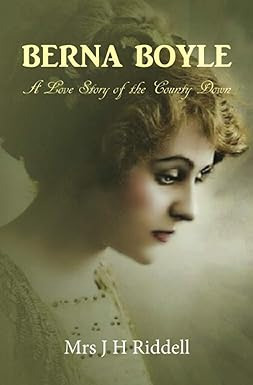
Mrs J H Riddell (Author), Philip Robinson (Editor)
Charlotte Riddell, née Cowan (1832-1906), was born and raised in Carrickfergus, County Antrim. Following a move to London in search of a literary career, she ultimately became one of the most prolific and influential female writers of the Victorian era. She had 56 novels and collections of short stories published in her lifetime as well as being co-owner and editor of the St. James’s Magazine, a very popular monthly periodical in its day. "Berna Boyle: A Love Story of the County Down" (first published in 1884) was her semi-autobiographical novel set in the village of Dundonald where she had lived in the early 1850s. Besides being a romantic tale, the book provides an important record of life in the area at that period. This new edition includes an introduction, footnotes, and a linguistic commentary and glossary by Dr Philip Robinson.
Order Berna Boyle »
Wullie Gunyun's Crack frae Clabber Raw
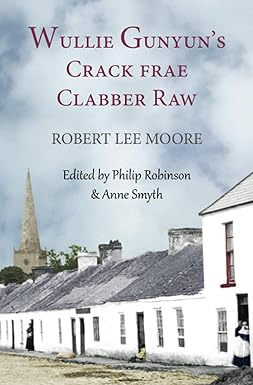
Robert Lee Moore (Author), Anne Smyth (Editor), Philip Robinson (Editor)
"Wullie Gunyun’s Crack Frae Clabber Raw": Wullie Gunyun (William Gunning) was the pen name used by Robert L Moore for a series of over 30 short stories in Ulster-Scots that he published regularly between March 1910 and December 1911 in the "North Down Herald and County Down Independent" newspaper. ‘Wullie’ was both narrator and hero of these humorous stories about topical events, personalities and everyday life in Bangor and the ‘hame ferm’ at Ballybuttle between Newtownards and Donaghadee, from which he and wife ‘Betty’ had flitted to ‘Clabber Raw’. This book is a companion volume to "The Leevin Tongue: An Historical Record of Ulster-Scots in County Down" by Robert Lee Moore, also edited by Anne Smyth and Philip Robinson (Ulster-Scots Academy Press, 2021). The Leevin Tongue’s 3000-word glossary serves not only as a record of the Ulster-Scots language used by him in these writings, but also as a full glossary to this book.
Order Wullie Gunyun’s Crack Frae Clabber Raw »
POETRY COLLECTIONS
Tha Jaa Banes: An Ulster-Scots Collection
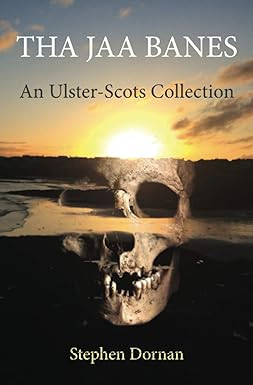
Steven Dornan
“Tha Jaa Banes” is a collection that draws on traditional genres and tropes from Scots and Ulster-Scots writing and combines these with a modern textual playfulness. It explores issues such as authenticity, identity, continuity and loss, and the intersections between oral and literary traditions. It showcases and celebrates the depth and richness of Ulster-Scots as a literary language.
Order Tha Jaa Banes: An Ulster-Scots Collection »
On Slaimish: An Ulster-Scots Collection
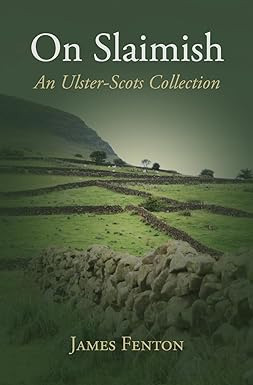
James Fenton
James Fenton, born in 1931, grew up in north Antrim, in the adjoining townlands of Drumadarragh and Ballinaloob. Educated at Stranmillis College and Queen’s University, Belfast, he spent his working life as a teacher and principal in Belfast, and now lives in Glengormley. He is the author of The Hamely Tongue: A personal record of Ulster-Scots in County Antrim (1995; new editions, 2000, 2007, 2014). The Hamely Tongue gave us a comprehensive record of contemporary Ulster-Scots; now, in the poems and prose of On Slaimish, the writer’s native language comes vividly alive. From this vantage point he stands, and takes his stand, ‘On the hoovin hairt o Antrim’.
Order On Slaimish »
Oul Licht and other Ulster-Scots Poems
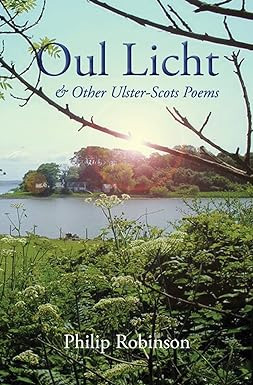
Philip Robinson
Philip Robinson, born in Larne in 1946, spent his childhood in Boneybefore in east Antrim, and has lived for more than 30 years in the Ards Peninsula, county Down. He is the author of Ulster-Scots: A Grammar of the Traditional Written and Spoken Language as well as four Ulster-Scots ‘kail-yard’ novels. His poetry in this collection also explores the fast-disappearing ‘Old Light’ of his native Ulster-Scots community in whose language they are written. Oul Licht and Other Ulster-Scots Poems is a window into that world – its language, humour, culture, religion and politics.
Order Oul Licht and other Ulster-Scots Poems »
A Heirskip Loast: Ulster-Scots Rhymes frae North Antrim
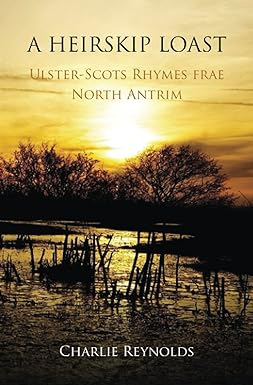
Charlie Reynolds
Charlie Reynolds (Chairlie “Tha Poocher” Rannals) is not only a confident native speaker of the North Antrim variety of Ulster-Scots, but he has been an active researcher, writer and supporter of the Language Movement since the early 1990s, if not before. His first collection of Ulster-Scots poetry was published by the Ulster-Scots Language Society 20 years ago – as the second volume in the “Ulster-Scots Living Writers” series – Mae Granfeyther’s Tunge, (Ullans Press, 2002). This new, extended volume contains additional poems and prose pieces. “A HEIRSKIP LOAST: Ulster-Scots Rhymes frae North Antrim”: Charlie Reynolds’ second collection of Ulster-Scots Rhymes reveals his enduring passion for the language, traditions, history and culture of the grass-roots Ulster-Scots community in his ‘hame’ country between Benvarden and Armoy in North Antrim. As he reflects with dismay on the increasingly rapid erosion of the language and ‘heirskip’ (heritage) that was the norm in his grandparents’ generation, he turns nostalgia into a celebratory record of Ulster-Scots as a ‘leevin language’ as well as a ‘hamely tongue’
Order A Heirskip Loast »
The Pappling o' the Prittaes and other unpublished poems (Ulster-Scots Works of Robert Huddleston)
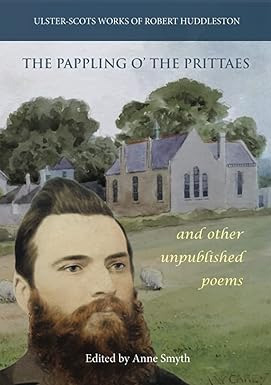
Robert Huddleston (Author), Anne Smyth (Editor)
Robert Huddleston (1814-1887) was a County Down farmer, gunsmith and prolific poet, both in English and his native Ulster-Scots. The eccentric “Bard of Moneyrea” published two books in his lifetime — A Collection of Songs and Poems on Rural Subjects (1844) and A Collection of Songs and Poems on Different Subjects (1846) — but the greater part of his writing remains in manuscript form and has yet to see the light of day. This selection of previously unpublished material, transcribed from Huddleston’s original manuscripts, provides a thoroughly entertaining assortment of the poet’s song and verse and a truly fascinating insight into local life and language of the time.
Order The Pappling o' the Prittaes »
Frae Cowie's Craig: An Ulster-Scots Miscellany
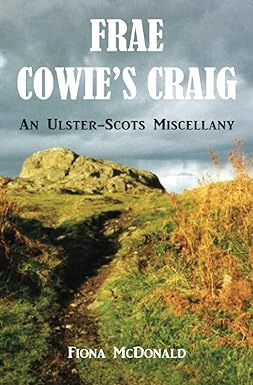
Fiona McDonald
“Frae Cowie’s Craig: An Ulster-Scots Miscellany” is the first time Fiona McDonald’s long-established Ulster-Scots writings as the “Newton Lass” have been brought together in a single book. Fiona has been writing in Ulster-Scots since the Ulster-Scots Language Society was formed in 1992, with individual pieces often appearing in the Society’s magazine “Ullans”. “A’m a lass boarn an rared in Newton – that’s Newtownards, County Down” the Newton Lass proudly declares, and she now lives with her family in a 200 year-old farmhouse at the foot of Cowie’s Craig in Conlig. Her signature poem, “Frae Cowie’s Craig” resonates as a sort of County Down Ulster-Scots proclamation, in much the same way as “On Slemish” does for James Fenton in County Antrim. As a leading light of the Ballyboley Ulster-Scots writers’ “Cless o 2004”, many of the prose pieces that were written by Fiona McDonald in that context are now also collected in this publication.
Order Frae Cowie's Craig »
MEMOIRS
Amang tha Rucks o Bellyhie
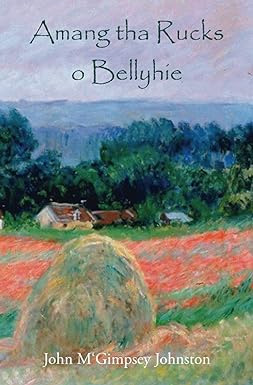
John M'Gimpsey Johnston
AMANG THA RUCKS O BELLYHIE: An Ulster-Scots Chronicle of Farm and Family Life. This fabulous collection of Ulster-Scots tales by John M‘Gimpsey Johnston records his childhood years in a small thatched house on a 20-acre farm at “The Knowe” in the townland of Ballyhay near Donaghadee in County Down. It is written in full Ulster-Scots, but with ‘pronunciation’ spellings that, when read aloud, bring the sounds of the local accent of the language to life. The book is not only a treasure-chest of words and idioms of linguistic interest, but it is also a living account of a past way of life: of family around the open-fire cooking hearth, and of neighbours in the horse-drawn farming world of ‘Tumbling Paddys’ and ‘Rucklifters’. Between the covers of this book the reader can visit a virtual folk museum and experience a genuine connection with the cultural soul of a rural Ulster-Scots community.
Order Amang tha Rucks o Bellyhie »

